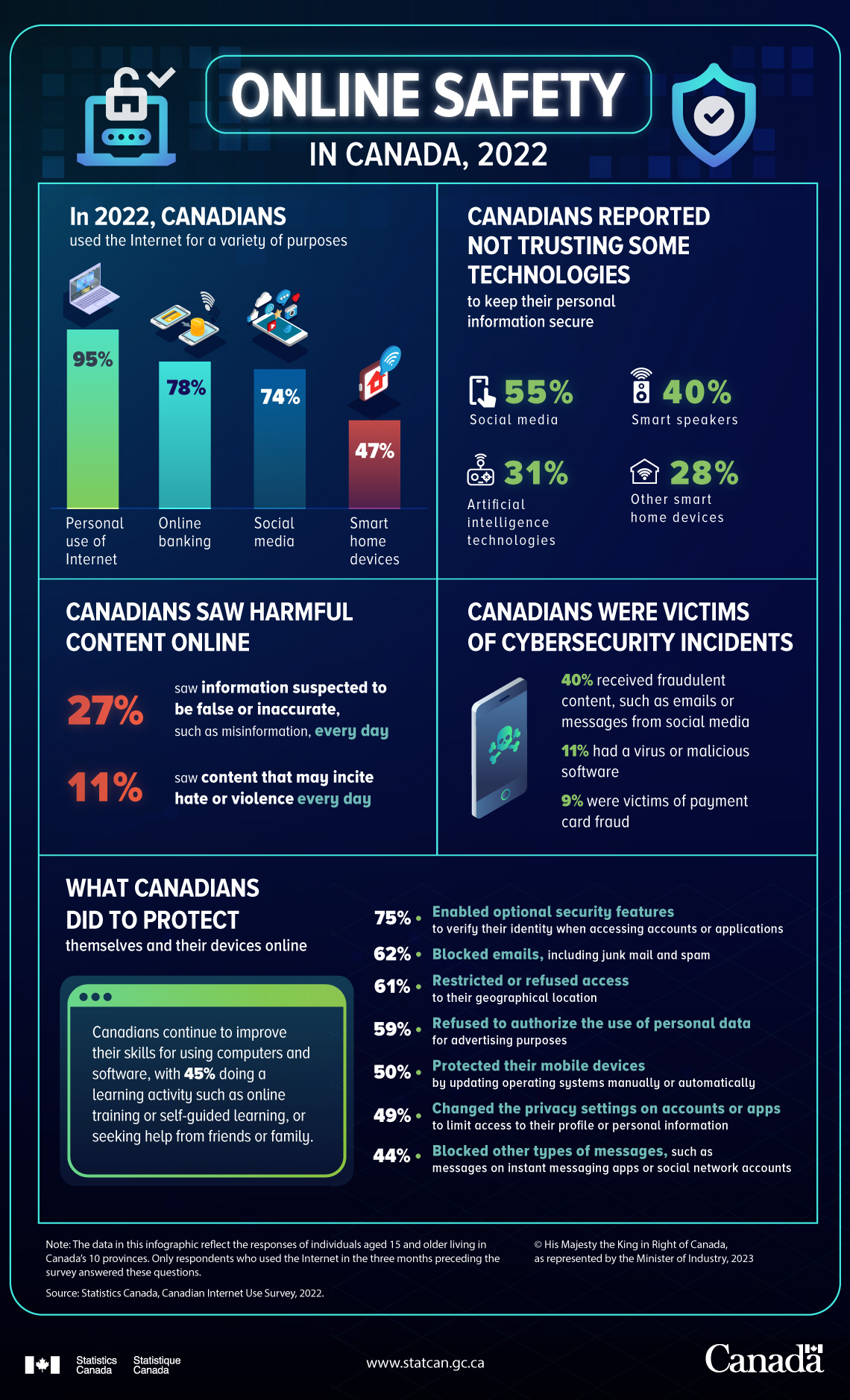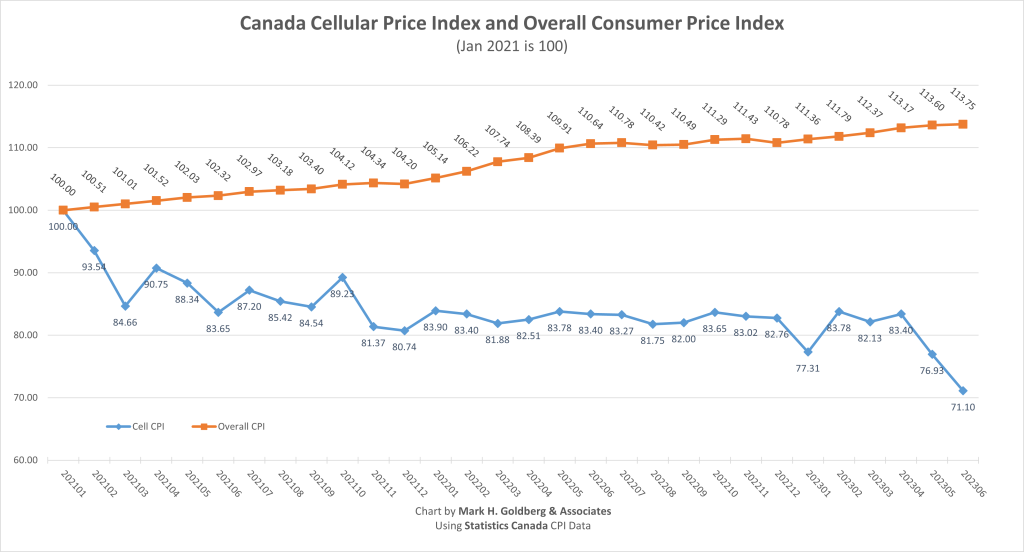With the dust having settled on Rogers Communications’ acquisition of Shaw Communications and Quebecor’s related acquisition of Freedom Mobile, now is a good time to take an early look at the impact the acquisitions have had on Canada’s telecommunications market.
When the transactions were first announced, some questioned whether it would result in a lessening of competition in Canada’s telecommunications market and if Canadians would end up paying more. Based on what Canadians have seen so far, the answer to both questions is a resounding “no”.
Just weeks after these transactions closed, prices for entry-level 5G wireless plans offered by Canada’s three largest wireless providers dropped by as much as 35 per cent and the price per gigabyte (GB) of data fell by as much as 50 per cent.
Other brands introduced new plans that offer more data at lower prices than their previous plans. Under its new ownership, Freedom introduced its first truly national wireless plan – with data that can be used in both Canada and the United States.
Simply put, since the Rogers-Shaw-Quebecor transactions were completed, Canadian mobile wireless users are getting more for less.
These recent price reductions are just the latest in a multi-year trend of declining prices in Canada’s wireless market. In fact, while Statistics Canada’s All-items Price Index has increased by 15 per cent during the last four years, its Cellular Services Price Index declined by over 36 per cent during the same period. And according to the government’s own price study, Canadians pay less per month for wireless services than customers in the United States.
Price declines of this magnitude are a clear sign of the vigorous competition that is occurring in Canada’s wireless market. And it should come as no surprise. According to Bank of America, the Canadian wireless market has long been one of the least concentrated in the world. With Videotron’s acquisition of Freedom, Canada now has four national service providers, along with strong regional providers that have brought additional competition to the regions they serve.
But assessing the performance of a telecom market is not one-dimensional. While price is usually top-of-mind, quality and coverage are also important factors. Canada’s mobile wireless networks cover more than 99 per cent of the population, and, according to PwC, are the best-quality networks of all G20 countries. This is truly remarkable when you consider the distances that our networks must cover compared to those in other countries.
This level of performance and coverage extends beyond the mobile wireless market. Canada also has among the best performing and farthest reaching high-speed fixed internet networks in the world with median download speeds that are more than 60 per cent faster than the G20 average, according to Ookla’s Speedtest Global Index.
Canadian networks provide access to speeds of one gigabit per second to a greater percentage of households than those in countries like Australia, the U.K., Italy, France, and Germany, based on a comparison of Australia’s Broadband Performance report, the CRTC’s Communications Market Report, and the European Commission broadband coverage report.
Meanwhile, internet service prices have remained relatively flat, defying the overall inflationary pressures that have resulted in significant increases in the price of most other goods and services.
These positive outcomes did not happen by chance. They occurred only because successive federal governments and the CRTC, have long recognized that facilities-based competition – or competition among network operators – is the preferred form of competition, as it determines Canada’s network quality, coverage, and reliability.
In its 2019 study of competition in Canada’s broadband industry, the Competition Bureau observed that while wholesale-based (or resellers) and facilities-based competitors compete against each other every day, “facilities-based competitors engage in a dynamic form of competition to successfully introduce better networks over time through investments in new technologies.”
The Competition Bureau further described the benefits of facilities-based competition as follows:
This type of dynamic competition benefits competition in at least two ways. First, it is logical that better networks provide better results for consumers: faster, less congested connections that grow and change more or less in tune with consumer demand. Second, once the investment in new networking equipment and physical lines has been made, companies have a strong incentive to compete hard and win customers in order to generate revenues sufficient to recoup those investments.
This race to provide the most robust networks is an important source of dynamic competition. It results in consumers having access to the fastest speeds and best connections while, at the same time, driving substantial investment in the Canadian economy. And, at least over the past 20 years, it has been a self-sustaining form of competition, as both telephone and cable companies jockey to establish themselves as market leaders.
In recent years, Canada’s national and regional facilities-based providers have combined to invest an average of more than $9.2 billion per year in capital expenditures to expand and enhance wireline broadband networks in Canada. Facilities-based providers have also invested close to $3 billion per year over the same period in wireless infrastructure, and more than $12 billion in acquiring additional spectrum licenses.
The benefits of facilities-based competition cannot be matched by mandated service-based competition, which relies on providing reseller companies with access to the networks built by facilities-based network operators at mandated wholesale rates. Because they do not invest in building their own networks, resellers do not contribute to Canada’s network quality, coverage, and reliability. They do not contribute to closing the rural/urban digital divide, nor do they help Canada keep pace with the technical advances that are crucial to Canadian businesses remaining competitive with their international peers.
It is within this context that the CRTC is currently reviewing its wholesale framework that provides resellers with mandated wholesale access to high-speed internet services. The potential negative impact of wholesale regulation on investment is well-established. As the Competition Bureau stated in its 2019 broadband study:
…wholesale access regulation diminishes the expected profits of the investment, as some of the profits from the investments are instead earned by wholesale-based competitors using that network to serve consumers.
In other words, mandated wholesale access can lessen a network operator’s incentive and capacity to invest in expanding and enhancing its network facilities. Without such incentives and investment capacity, Canada risks falling short of the investments necessary to bridge the digital divide, stimulate research and innovation, maintain network security and resiliency, and provide the connectivity needed for Canada to remain competitive in an increasingly digital economy.
As the evidence shows, following the Rogers-Shaw and Freedom-Quebecor transactions, facilities-based competition is not only continuing to deliver ever-improving quality, coverage, and resiliency, it is also delivering lower prices and more value for money. To the extent the CRTC keeps mandated wholesale internet access as part of its telecom policy framework, it is crucial that it balances its wholesale objectives with the need to maintain the benefits of facilities-based competition and the incentives for private sector investment in high quality and resilient infrastructure and innovative services. Specifically, wholesale prices must be set at levels that ensure that investment incentives are maintained.
 The 2022 Canadian Internet Use Survey was actually conducted between December 2022 and April 2023. Although Statistics Canada has been conducting its Canadian Internet Use Survey for many years, the agency cautions against comparing data prior to 2018 because of changes in design.
The 2022 Canadian Internet Use Survey was actually conducted between December 2022 and April 2023. Although Statistics Canada has been conducting its Canadian Internet Use Survey for many years, the agency cautions against comparing data prior to 2018 because of changes in design. 


